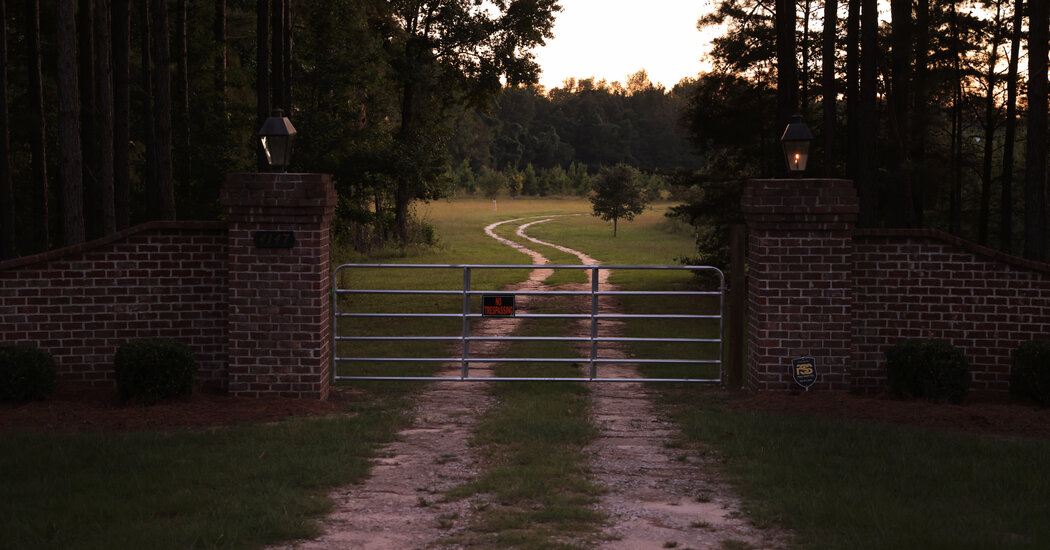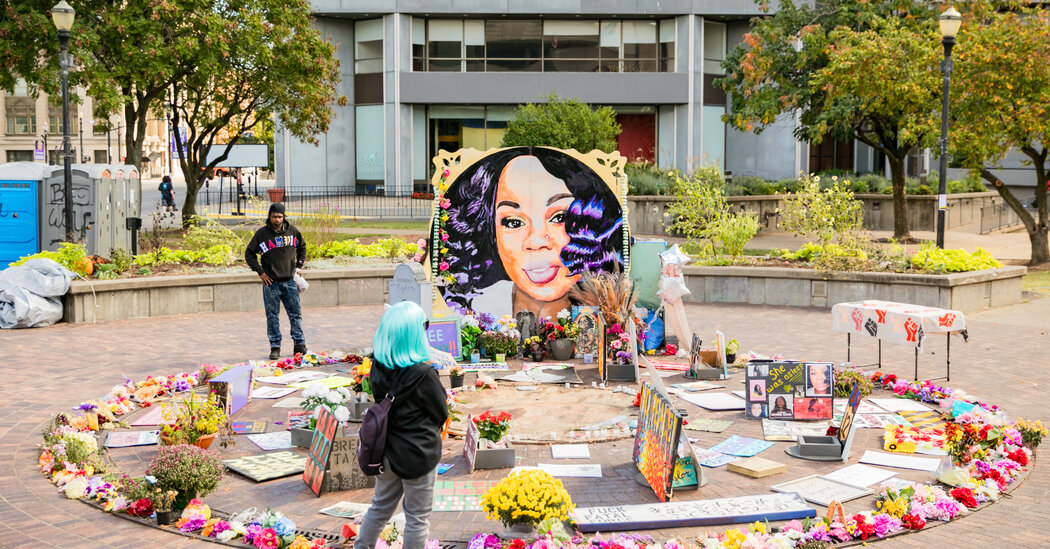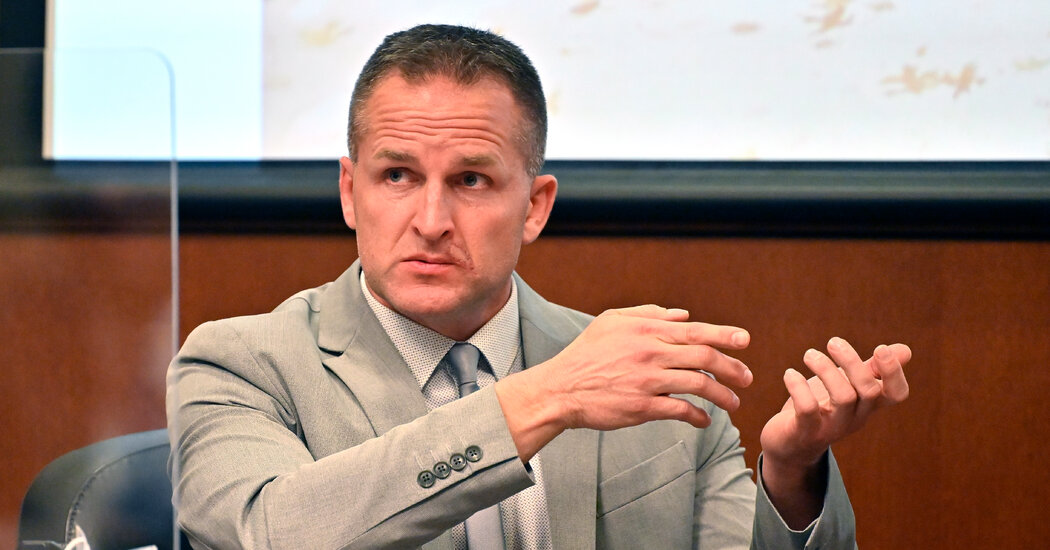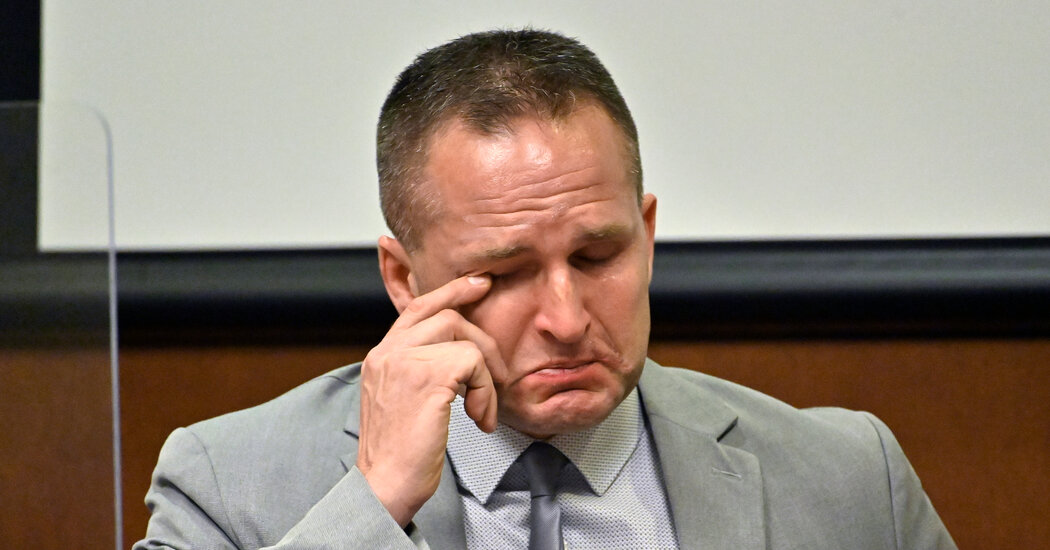Brett Hankison is on trial over charges that he endangered Ms. Taylor’s neighbors. His bullets did not strike anyone, and he testified that he had done nothing wrong in the fatal police raid.The former detective who is facing charges of recklessly endangering Breonna Taylor’s neighbors during the fatal police raid on her apartment testified at his trial on Wednesday, saying that he wrongly interpreted the sound of his fellow officers spraying bullets into Ms. Taylor’s apartment as that of a suspect firing a rifle at the police.The testimony marked the first time that the detective, Brett Hankison, has spoken publicly since the botched March 2020 raid in Louisville, Ky., that left Ms. Taylor dead, and he described a chaotic scene and a series of errors. Mr. Hankison, 45, whose bullets did not strike anyone, is on trial for three counts of wanton endangerment. Prosecutors say he endangered a family of three who lived next to Ms. Taylor when several of the bullets that he fired traveled through Ms. Taylor’s apartment and into theirs.Mr. Hankison, wearing a gray suit with a silver tie, sounded nervous, and he choked up several times as he described the raid, during which officers burst through Ms. Taylor’s door shortly after midnight in hopes of finding evidence that her former boyfriend had been selling drugs. They had expected that she would be home alone, but instead she was sleeping in bed next to her current boyfriend, Kenneth Walker, when their banging on the door woke her up.The police knocked down the door, and Mr. Walker, who later said he believed the officers were intruders, fired a handgun once, striking an officer in the thigh. Three officers fired 32 shots in return, several of which struck Ms. Taylor, a 26-year-old emergency room technician.Ms. Taylor’s death was one of several police killings of Black people across the United States in 2020 that led millions of protesters to take to America’s streets, sidewalks and plazas.Mr. Hankison, who had worked for the Louisville Metro Police Department for about 17 years before he was fired in the wake of the raid, testified that when Mr. Walker fired at the officers, the muzzle flash illuminated the hallway inside the apartment and allowed him to briefly see a shadowy figure standing there in a shooting position. He said the flash and the loudness of the gunshot led him to wrongly believe that Mr. Walker had fired with an AR-15-style rifle rather than a handgun.Then, as Mr. Hankison ran away from the door and to the outside of the apartment complex, he heard a volley of gunshots that he believed were being fired by the figure he had seen inside, but they were actually the 22 gunshots that two other officers were firing in return. Mr. Hankison wiped his nose and eyes as he described his fears that officers were being shot as they tried to tend to the wounded officer, Sgt. Jonathan Mattingly.“I knew Sergeant Mattingly was down, and I knew they were trying to get to him, and it appeared to me that they were being executed with this rifle,” Mr. Hankison said.Sheriff deputies stood by last week as jurors in the Brett Hankison trial toured the scene of the raid on Breonna Taylor’s apartment.Timothy D. Easley/Associated PressFrom the side of the building, Mr. Hankison fired 10 bullets through a sliding-glass door in Ms. Taylor’s apartment and a window, both of which were covered by blinds. Mr. Hankison’s lawyer asked him what he had been aiming at, and Mr. Hankison said he had been firing toward the muzzle flashes that he saw in the apartment. Mr. Walker did not fire his gun after his initial shot.In June 2020, the police chief at the time fired Mr. Hankison, writing in a letter that Mr. Hankison had “blindly” fired into the apartment and describing his actions as “a shock to the conscience.”Mr. Hankison is the only officer to be indicted over his actions during the raid. Several of the grand jurors who returned the indictment said that the Kentucky attorney general’s office, which is handling the prosecution, did not present them with the possibility of pursuing charges against either of the two officers who shot Ms. Taylor.Mr. Hankison was the last witness to testify at his trial, and jurors were expected to begin deliberating on Thursday. Under Kentucky law, a person commits the crime of wanton endangerment when he or she “wantonly engages in conduct which creates a substantial danger of death or serious physical injury to another person”; the crime does not require that someone intended to harm someone or commit a crime. It is punishable by up to five years in prison.Mr. Hankison testified that he had served between 800 and 1,000 search warrants in his policing career and had never fired his gun while on duty before that night. But he also described making a series of mistakes, including misunderstanding who was shooting, calling for help over the wrong radio channel and forgetting the address of the apartment building.Still, asked by his lawyer if he believed he did anything wrong, Mr. Hankison responded, “Absolutely not.”He said that he understood the anger and distress of the neighbors who feared for their lives as several bullets flew into their apartment, and he apologized to them.“And Ms. Taylor’s family, it was just — she didn’t need to die that night,” Mr. Hankison said from the stand before prosecutors quickly objected.On cross-examination, Barbara Whaley, an assistant attorney general, pressed Mr. Hankison on what he had been aiming at and why he did not realize or consider that another apartment sat directly behind Ms. Taylor’s.Mr. Hankison reiterated that he had been firing toward the “strobing” light of the muzzle flashes, and he said that he had been focused on Ms. Taylor’s apartment, No. 4, and that other officers had been standing in front of the door of the neighboring unit, obscuring his ability to see it.A day earlier, Chelsey Napper, who lived in the apartment that was struck by Mr. Hankison’s bullets, testified that she had been about seven months pregnant on the night of the police raid, and that she had awakened suddenly to a loud sound from outside. Ms. Napper said she and her boyfriend, Cody Etherton, initially had no idea that the bullets piercing their apartment were coming from the police.“There were bullets flying everywhere,” Ms. Napper said, describing her frantic rush to check on her son, who was 5 years old at the time, and how she cowered on the floor with him.“I was scared for my life, I was scared for Cody’s life, I was scared for my unborn child’s life and my 5-year-old’s life,” she said. Prosecutors had called Mr. Etherton to testify on the first day of the trial, which began last week and has also included testimony from experts and police officers.Following Ms. Taylor’s death, two states and a host of municipalities banned or restricted the police from serving “no-knock” warrants, which authorize officers to burst into homes without warning; in Ms. Taylor’s case, a judge had initially signed off on such a warrant but the orders were later changed to require that the police knock and identify themselves. The officers involved in the raid have said that they did so, but Mr. Walker and many neighbors at the apartment complex said they only heard the officers bang on the door.Myles Cosgrove, the detective who the F.B.I. said fired the bullet that killed Ms. Taylor, will not testify, the judge overseeing the case ruled, because he may be a subject of a federal investigation into the raid on Ms. Taylor’s apartment. A recorded deposition he gave as part of a lawsuit was played for jurors instead.




